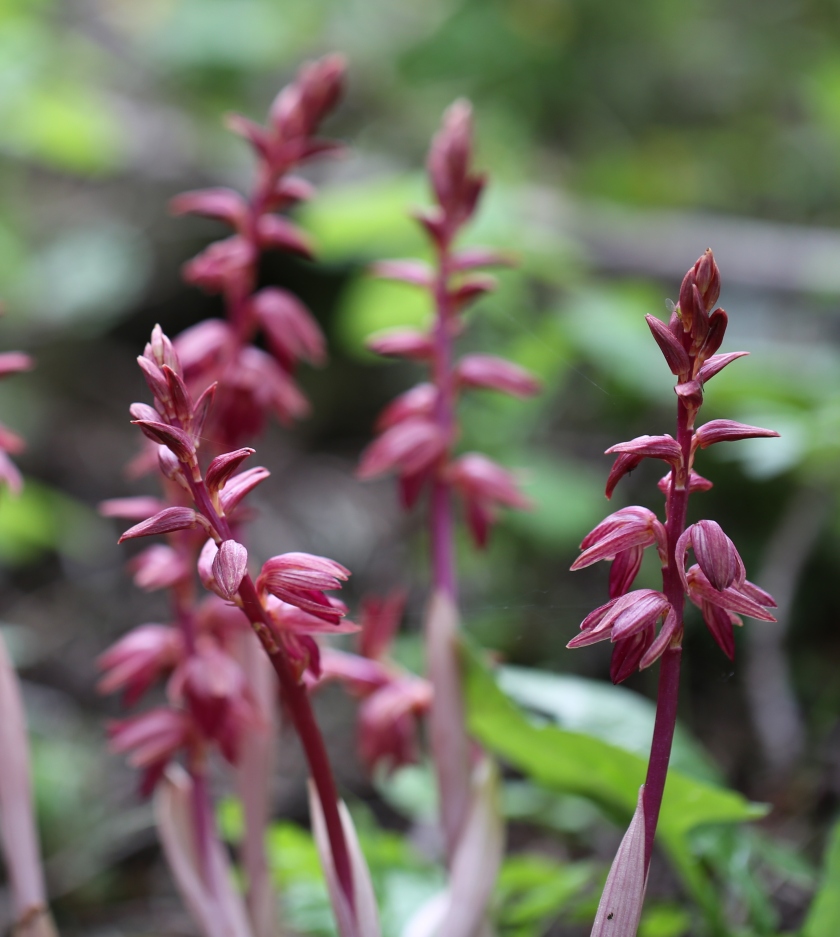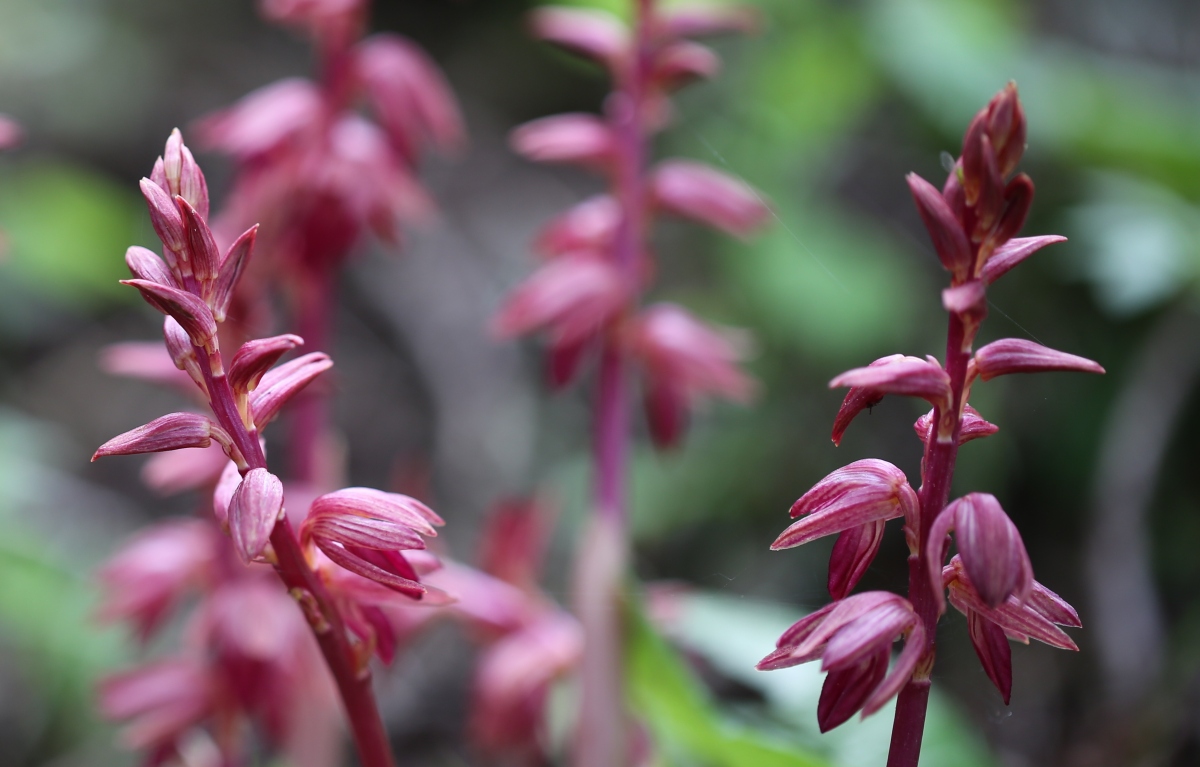Ethnobotany. Corallorhiza maculata was used by the Iroquois, Paiute, Navajo and Shoshone Peoples (Correll 1950; Moerman 1998). Correl speculated it was used to prepare an infusion to build up blood in relation with its red color. Other Indigenous uses of Corallorhiza maculata are as a diaphoretic, febrifuge and sedative.
Pharmacon. «Description: The dried root, as met in commerce, is composed of small, coral-like pieces, about 2 lines in diameter, and from 3 to 12 lines long, the longest pieces consisting of the small, coral-like branches, round or compressed, crooked, wrinkled lengthwise, more or less distinctly annulated at distances varying from 1 to 2 lines, dark-brown externally, and lighter within. Its fracture is short, presenting under the microscope a shining, pulverulent, or granular appearance, somewhat like the saccharine frost on figs and raisins. The root is inodorous, with a taste sweetish at first, somewhat resembling that of raisin-seed, and succeeded by a faintly bitterish, mucilaginous flavor». In “King’s American Dispensary”. Harvey Wickes Felter and John Uri Lloyd. 1898.
Harvesting and Preparation of Coral Roots. Very precised informations can be gathered from Ryan Drum’s excellent article – “Three Herbs, Yarrow, Indian Consumption Plant, Coral Root”.
According to Harwey Wicks Felter. Tinctura Corallorhiza, Tincture of Coral Root. (Coral root, 4 ounce; Dilute Alcohol [or Whisky] 16 fluid ounces.) Dose, 1 to 2 fluid drachms.
Infusum Corallorhiza, Infusion of Coral Root. (Crushed rhizome, 1/2 ounce; Boiling Water, 16 ounces). Dose, 1 to 2 fluid ounces.
Materia Medica. According to the “CRC World Dictionary of Medicinal and Poisonous Plants”, this species is diaphoretic, aphrodisiac, sedative, febrifuge and has been used in the treatment of ring worms, tuberculosis, colds, pneumonia and skin diseases.
According to Harwey Wicks Felter: « Specific Indications. General prostration, malaise, hacking cough, loss of appetite, reduced weight, pleuritic pain, bronchial irritation and low pyrexia. Action and Therapy. This is the most perfect diaphoretic we know of, duplicating the natural processes of perspiration when given in small doses and increasing the watery contents when administered in hot infusion. It is pleasant to the taste and acts kindly upon the stomach. It was once used largely in fevers. Its principal use is in subacute inflammatory disorders of the respiratory tract, being especially valuable in the declining stages of bronchopneumonia, of a low but inactive type, with much depression, prostration after cough or effort, copious heavy expectoration, and general debility. For Convalescence from such states and after bronchitis, la grippe (Serious Influenza), and pneumonia, it is an ideal remedy. In those of a phthistical build (asthmatic), much hacking cough, loss of weight, lack of appetite, pleuritic pains, and general prostration-yet not actually consumptive, it is one of the best tonics we have ever employe. For dry bronchial irritation, with wheezing, tightness of the chest, paroxysms of irritable cough, together with dry or inactive skin, Coral Root is extremely effective. In respiratory debility Coralorrhiza acts slowly but surely.» In “The Eclectic Materia Medica, Pharmacology and Therapeutics”. Page 125. 1922.
Description from the Flora of America. Corallorhiza striata: Stem ± strongly thickened, base not bulbous. Inflorescences: racemes lax to dense, 10–67 × 1.2–4.5 cm. Flowers 2–35, chasmogamous, conspicuous to showy; perianth open and spreading to connivent; sepals and petals salmon reddish purple with darker veins or pure yellow, lanceolate to oblanceolate, 3–5-veined; lip obovate, unlobed, 3.2–16.5 × 2–6.2 mm, thickened, margins deep red with white or yellow at base, or pure yellow, upturned, giving boat-shaped appearance especially toward apex; callus formed by partial connation of 2 basal lamellae, less than 1/3 length of lip; column pure yellow or yellow spotted with red, curved toward lip, 3–6 mm, base without auricles or ridges; ovary 3–8.5 mm; mentum absent. Capsules ellipsoid, 11–30 × 5–10 mm.

